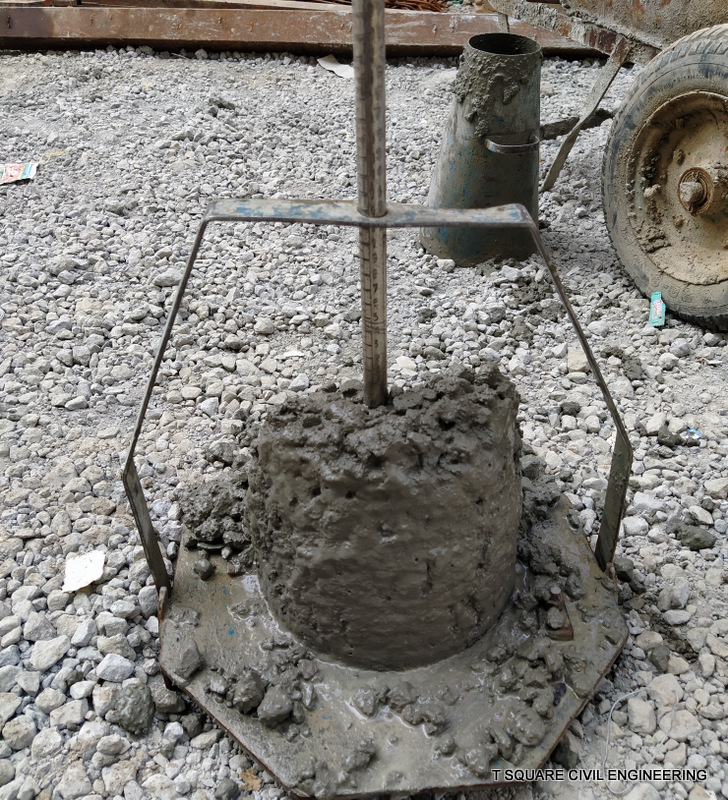Page Contents
Slump Cone Test for Concrete Workability:
Workability is the most important property of freshly mixed concrete. workability can be defined as the ease or difficulty with which the concrete can be mixed, transported, placed and compacted. The workability of concrete at the field can be measured by using the slump cone test.

Procedure of the test
- Clean the inside of the cone with a moist cloth leaving the surface damp before the test. Place the cone on a smooth level, rigid and impervious surface a steel base plate with swivel arm free from vibration.
- Fill the cone in four layers of approximately equal depth. Ensure that the cone is held down firmly using the footrest or clamp arrangements. Tamp each layer with exactly 25 strokes of the tamping rod. It is necessary to ensure that tamping strokes are evenly distributed over the layer. Each stroke should just penetrate inside the layer below.
- Heap the concrete above the cone during tamping of the top layer and strike off level with concrete top using sawing and rolling motion of the tamping rod. Remove any spillage from around the base without disturbing the cone.
- Lift the cone vertically from the concrete within 5 to 7 seconds raise the swivel arm to its vertical position, measure the distance between the underside of the rod and the highest point of the concrete. Record this distance nearest to 5mm as a slump.
- As per IS456, slump value, degree of workability and concrete placing conditions tabulated below.
| Sl No. | Placing Conditions | Degree of Workability | Slump Value (mm) |
| 1 | Blinding concrete, Shallow sections, Pavements using pavers |
Very low | Compacting factor-0.75-0.8 suggested. |
| 2 |
Mass concrete, Canal lining, Strip footings |
Low | 25-75 |
| 3 | Heavily reinforced “. sections in slabs, beams, walls, columns; Slipform work; Pumped concrete |
Medium | 50-100 75-100 |
| 4 | Trench fill; In·situ piling Tremie concrete |
High Very high |
100-150 |
Details of Slump cone

How to Measure Slump Value

Types of Slump

